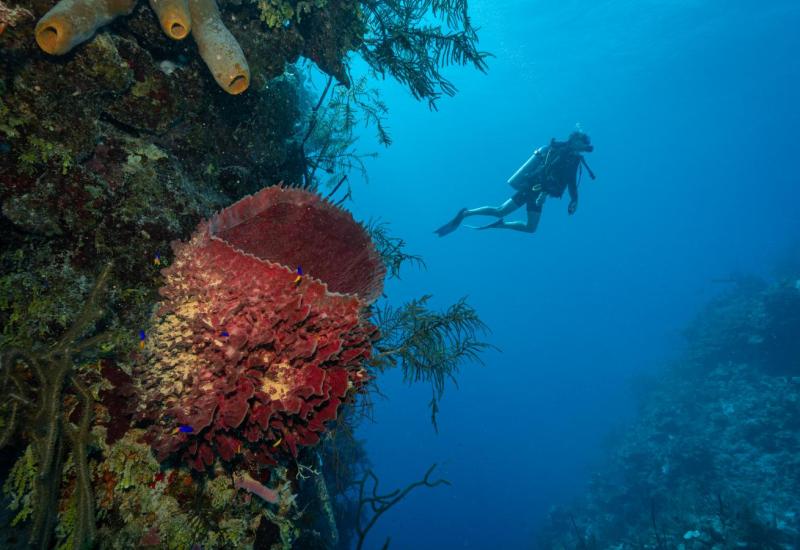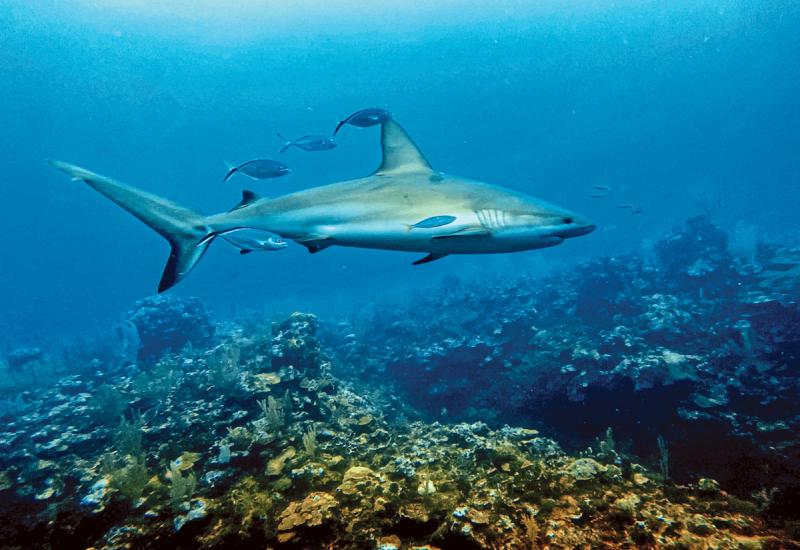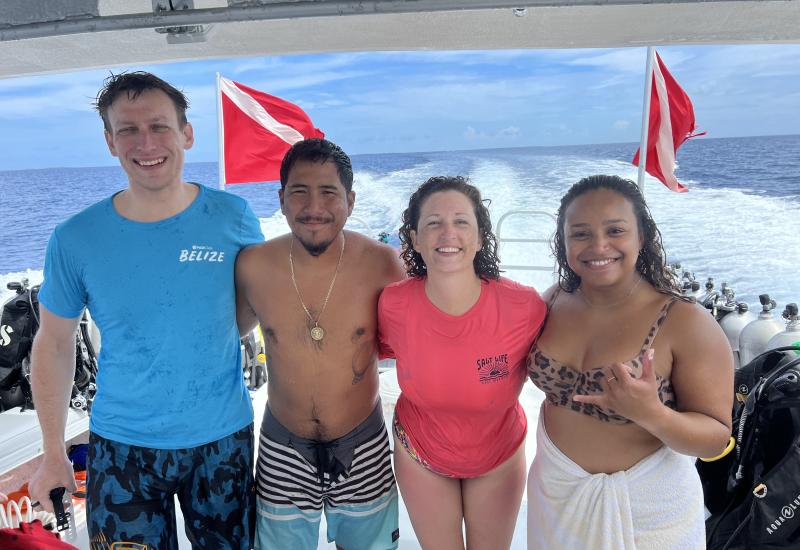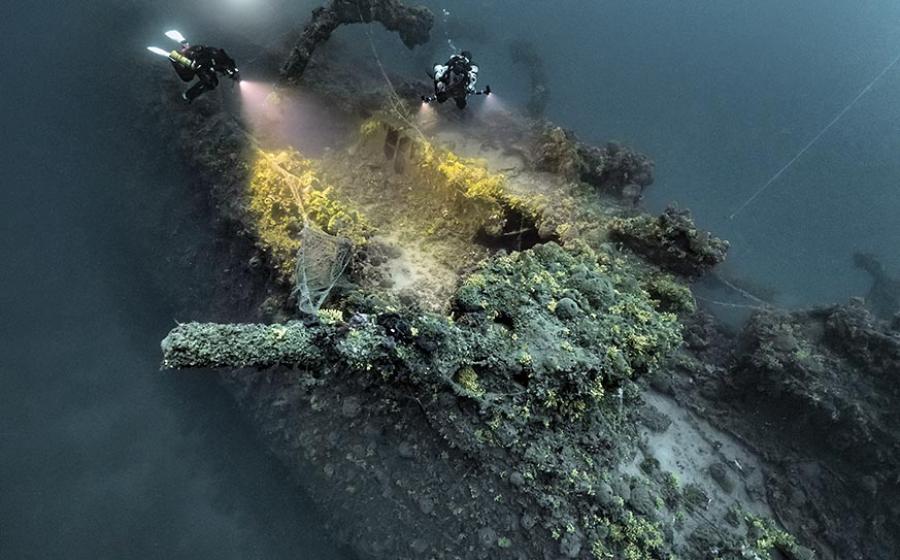Scuba Diving Among Mangroves

Brian Skerry/National Geographic CreativeA diver explores a deepwater mangrove in a lagoon off Belize’s Sittee River.
Chances are, if you’re a diver who has visited a tropical destination, you’ve been on a dive boat as it motors past a mangrove forest. These spindly nests of trees have a web of roots that suspends them above seawater in tropical intertidal zones around the world. They are a biological oddity, living both on land and in the ocean, able to thrive in both searing heat and salty water that would kill most plants.
There are about 70 species of mangroves, more than 80 percent of them found in the Indo-Pacific region, while the Americas are home to only 12 species of mangrove. It’s believed that mangroves originated in Southeast Asia. They spread throughout the world’s tropical regions thanks to their seeds, which evolved to travel for months or years on ocean currents until they can put down roots on distant shores.
Mangroves are one of the most important habitats in the tropics. You might not realize it as you fin among colorful corals, but the health of coral reefs is directly linked to mangroves. That’s because mangroves serve as nurseries for much of the marine life that lives on the reefs. The tangle of roots underwater provides safety and shelter for juvenile fish and other creatures, which migrate to the reefs once they’re large enough to survive in the open.

Christian Ziegler/Minden PicturesRed mangrove roots shelter small fish at Carrie Bow Cay, Belize.
Mangroves directly impact life on land, including human life. Their roots hold onto the ground, not only preventing erosion, but also building new land as sediment gets trapped among the roots. These hardy coastal forests act as a barrier protecting the land, especially during extreme events like hurricanes and tsunamis.
Mangroves shouldn’t be overlooked as diving and snorkeling destinations in their own right. They might not have the viz of a tropical reef, but swimming through these sun-dappled forests of roots offers opportunities to see a destination in a new light. In Cuba’s Jardines de la Reina Marine Park, divers have the opportunity to spot American crocodiles swimming among mangrove islands in one of the Caribbean’s largest marine protected areas, while manatees cruise the mangroves of Belize.
But for the most stunning mangrove diving, look to the Indo-Pacific. The mangroves in places like Indonesia’s Raja Ampat rival its reefs in beauty and biodiversity, offering photo opportunities for wide-angle and macro photographers alike. In Raja Ampat’s bluewater mangroves, juvenile reef fish and sharks roam underwater forests of roots hung with brilliantly colored soft corals. One interesting creature to look out for is the archer fish, which shoots insects out of the air with jets of water.
Fast Facts
What: Intertidal forests and wetlands that provide vital habitat for birds and marine life
Conservation Status: Threatened. In the Americas, mangroves are removed at a faster rate than tropical rainforests.
Where to Find Them: Tropical and sub-tropical regions around the world
Go scuba diving with...
Harbor Seals
Humboldt Squid
Lemon Sharks










